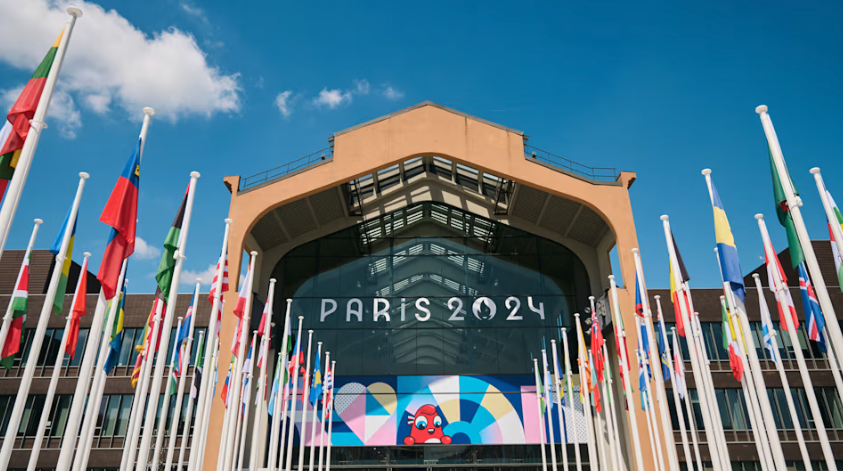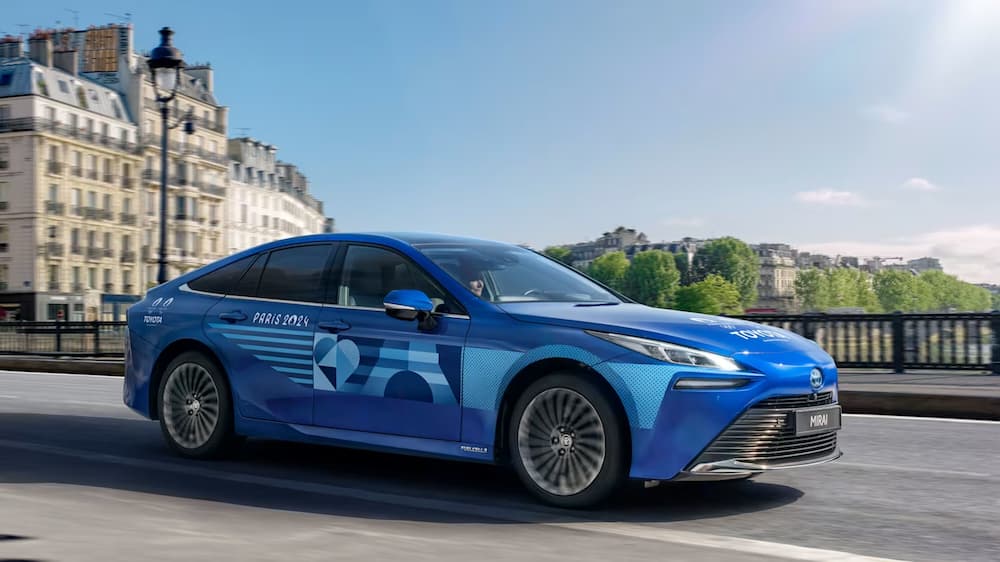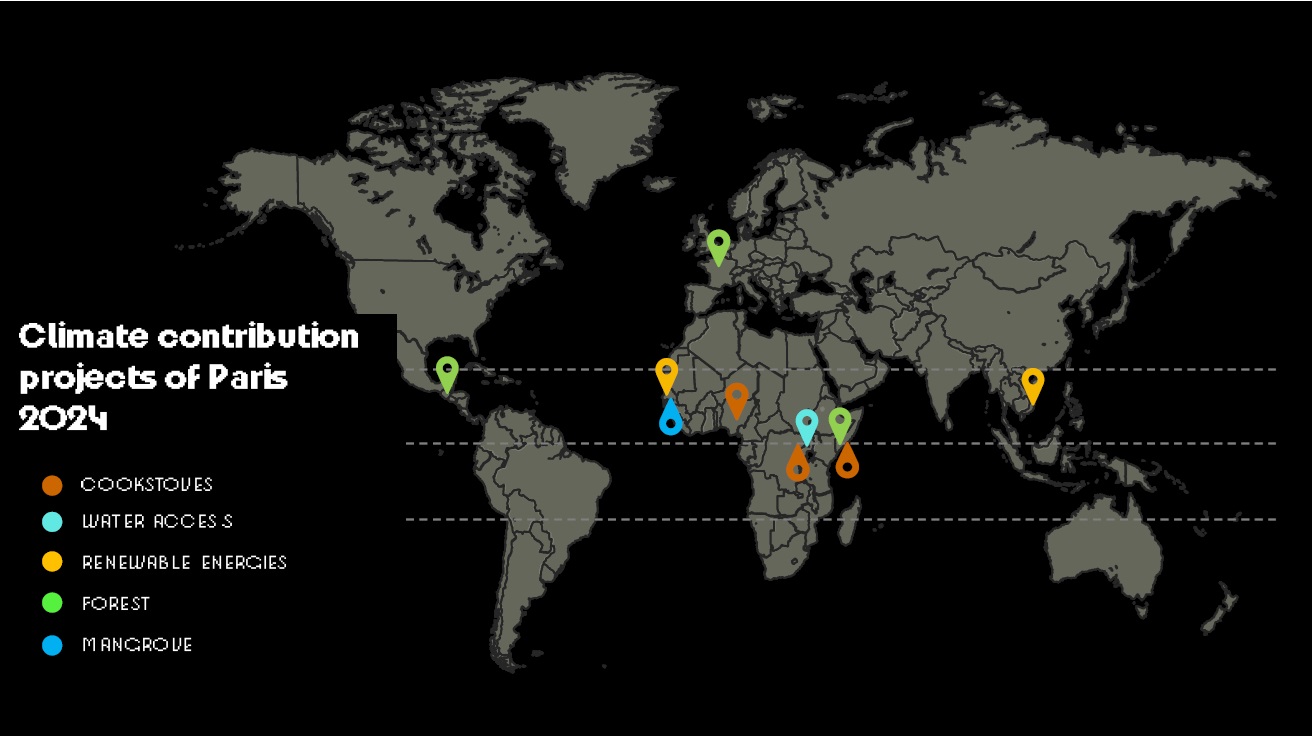
The 2024 Paris Olympics start today, prioritizing sustainability and being called "the greenest Olympics in history." (Photo: International Olympic Committee)
The 2024 Paris Olympics begin today, marking the city's third time hosting the Games in a century. It aims to be the "greenest Olympics in history," with a strong focus on sustainability and environmental protection, and anticipated limit carbon emissions to 1.58 million tonnes of CO2 equivalent (tCO2e), which is less than half the emissions of recent sessions.
To achieve this goal, the Paris Olympics are focusing on reducing carbon emissions from construction, transportation, procurement, and accommodation. Non-profit organization Carbon Market Watch released the "Going for Green" report in April, which thoroughly assesses the carbon reduction strategies of the Paris Olympics, highlights successes, and identifies aspects that need improvement in this event.
How Paris plans to host the most sustainable Olympics?
1. Construction: 95% of the competition venues are repurposed from existing or temporary sites
Construction accounts for about 30% of the carbon footprint of the Paris Olympics. In this session, a total of 95% of the venues are using existing or temporary construction, with 70% existing venues and 25% temporary venues. Iconic landmarks such as the Palace of Versailles and the Eiffel Tower have been repurposed as competition venues to avoid new construction as much as possible.
To further reduce the carbon emissions from buildings, the organizers give priority to the use of bio-sourced materials, including wood, and are focusing on using reusable and recyclable materials to minimize the use of raw materials.
The report notes that the organizers have not yet provided detailed information on the actual breakdown between reuse, repurposing, and recycling, making it difficult to accurately assess the effectiveness of the temporary venues.
2. Transportation: 80% of the venues are located within 10 km of the Olympic Village
Transportation accounts for about 40% of the Game's carbon footprint. The committee made an effort to centralize the competition areas, with 80% of the venues located within a 10-kilometer radius of the Olympic Village and 85% of the athletes' accommodations within a 30-minute travel time to their competition sites. This setup lowers carbon emissions by encouraging the use of public transportation, bicycles, and walking.
Toyota has become the only global automotive partner for the Paris Olympics, providing a comprehensive transportation solution that includes 2,650 electric vehicles and 500 hydrogen-powered Mirai vehicles.

Toyota provides 500 hydrogen-powered vehicles, "Mirai," for the 2024 Paris Olympics. (Image: Toyota)
However, the largest source of carbon emissions comes from the travel of spectators, athletes, staff, and journalists, particularly from air travel. While the organizers have encouraged, recommended, or invited visitors to use trains, they have not outlined specific strategies or details for implementing this.
3. Procurement: 100% carbon-neutral services are difficult to verify
Non-food products procurement accounts for approximately 20% of the carbon footprint of the Game. The Paris Olympics requires its commercial partners and suppliers to ensure that 100% of their products and services comply with sustainability and carbon neutrality criteria. However, these carbon neutrality standards are still vague or unverifiable, allowing suppliers to use carbon offsets to neutralize their emissions.
4. Energy: 100% renewable, but the source raises questions
Additionally, regarding energy consumption, which accounts for about 8% of the total carbon footprint, the organizers have claimed that all venues will use 100% renewable energy, but they have not specified the sources of this renewable energy.
The report notes that most of the renewable electricity will be obtained through the purchase of renewable energy certificates (REC). However, these certificates do not guarantee that renewable energy is actually connected to the grid, meaning there is no assurance that “production does not necessarily take place in the same country, nor at the same time”. Where directly signing power purchase agreements (PPAs) for renewable energy is a more effective way to promote the development of renewable energy.
Moreover, despite promoting a green and sustainable image, the initial decision was not to install air conditioning in the 7,000 rooms of the Olympic Village. However, facing public pressure, 2,500 units were eventually installed.

Paris 2024 carbon contribution projects. (Photo: Paris 2024)
Insufficient information on carbon offsets and weak climate commitments from sponsors
To reduce carbon emissions, the Paris Olympics is following the ARO principle (Avoid, Reduce, and finally Offset) to minimize carbon emissions.
In terms of carbon offsets, the Paris Olympics plans to invest €15 million (about USD 16.3 million) to purchase carbon credits, at a rate of €10 per ton of CO2 (about USD 10.9). This price is slightly higher than the current average price in the voluntary carbon market but remains significantly lower than the price of the European Union Emissions Trading System (ETS) or the projections of the social cost of carbon. Due to the lack of crucial details about the carbon offsetting strategies, it is challenging to assess the impact of the funds provided by the Olympic Committee.
Notably, the report also reviewed the climate commitments of the Olympic sponsors. It highlighted that several companies listed as official partners, including Aeroports de Paris, ArcelorMittal steel company, Air France, and AccorHotels, have operations that are incompatible with the objectives of the Paris Agreement.
Only the French state-owned EDF (Électricité de France) is actively following a decarbonization pathway compatible with the less ambitious 2°C goal of the Paris Agreement. Many other sponsors' decarbonization strategies are projected to lead to a global temperature increase of over 3°C.
Source: Carbon Market Watch

